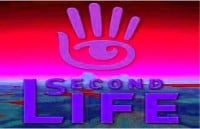
Networking yourself to oblivion

The tribulations and perils of a connected avatar
- Dateline
- 12 June 2020
We are all ubiquitously interconnected. But you know that. You are one of us.
With more than five billion active users of the web, I know that anyone is just a few connections away. I can reach almost anyone instantly – and at zero cost.
Facebook, MySpace and SecondLife spawned a plethora of social networking sites that have all merged into a common invisible infrastructure for personal interconnectedness.
But what has it wrought? Did the promise of openness, freedom to connect, collaborative teams across the world and unlimited economic opportunity actually come to pass?
The economics have made sense. Amazon, Google and eBay showed us the business sense of being massively interconnected and the value in exploiting ‘the Long Tail’.
Even established companies like Microsoft, Li & Fung and British Airways followed – they have a hundred times the business partners they ever had. Proctor & Gamble has made ‘open innovation’ the norm.
Yet, why are there so many of us individuals who can’t escape the myriad of narrow sterile communities of people who think just like us? Why do I feel so excluded from many of the networks I yearn to be a part of?
What’s happened to the diversity that a global melting pot of seven billion people promised?
I’m staring at my desktop – I feel I can dive into the crystal-blue image of a Caribbean lagoon in front of me. Without moving an inch I can explore the history of my investments in a fully-functional, ‘tangible’ 3-D world. I can clamber over and through the records of my past in glorious color. Wait, now I’m in a rain-forest. I can literally sense the mist.
But my avatar is empty and alone. I feel deserted, with nowhere to go, and no-one to join me. The other avatars simply don’t excite me. I am suffering from moral vertigo. I have networked myself into oblivion.
My second life has become my first life.
I feel something important is missing, and it hurts.
ANALYSIS >> SYNTHESIS: How this scenario came to be
‘Avatar’ is a Hindu term for the earthly representation of a god.
In computing and social networks, an avatar is the graphical representation of a user – either in a virtual world (such as SecondLife) or in any social network (such as MySpace or Facebook).
In these realms the avatar is often not representative of the user in the ‘real’ world and is often used as an experiment to explore others’ reaction to a different physical manifestation. The opportunities for criminal exploitation are obvious.
But social networks are by definition social – they embody conversations between people, and people use these networks to get help, find information, spread news and promote causes.
The danger is that, as a supremely connected online persona, you might find that when you are not online, you feel very disconnected!
Links to related stories
- The perils of frantic, indiscriminate networking - Stefan Stern in the Financial Times, 28 October 2008
- Power and responsibility at work: The experiences of today's 'Network Citizens' - Demos (The Think Tank for everyday Democracy), 29 October 2008
- MindBullet: LONELINESS NOW THE BIGGEST SOCIAL ISSUE (Dateline: 30 December 2010, Published: 30 December 2004)
- MindBullet: WHICH ONE IS THE REAL ME? (Dateline: 17 September 2014, Published: 05 October 2006)
Warning: Hazardous thinking at work
Despite appearances to the contrary, Futureworld cannot and does not predict the future. Our Mindbullets scenarios are fictitious and designed purely to explore possible futures, challenge and stimulate strategic thinking. Use these at your own risk. Any reference to actual people, entities or events is entirely allegorical. Copyright Futureworld International Limited. Reproduction or distribution permitted only with recognition of Copyright and the inclusion of this disclaimer.